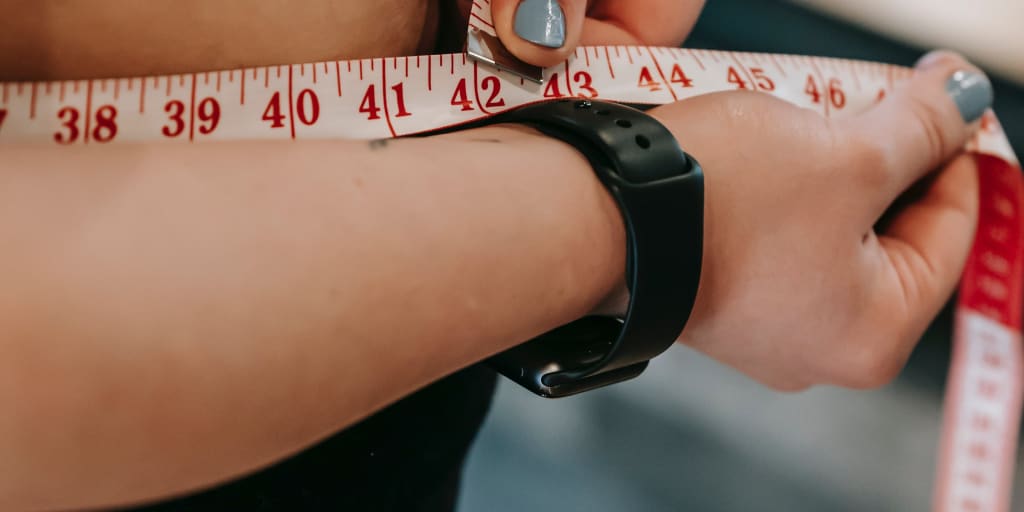Substance Abuse vs. Obesity
Which is worse for overall mental health in American youth.

Question:
Considering the decline in mental health of youth in the United States, is substance abuse or obesity the most discernable factor in having a negative impact on their mental health?
Studies and Evidence:
The report given by the CDC in 2022 on Children’s Mental Health provides overall statistics gathered from government agencies across the United States. The CDC also collects their own data through methods such as the National Child Survey of Children’s Health and provide quantitative data (CDC, 2022). The statistics and facts provided are well documented from the largest demographic possible in the United States. The information is broken down into statistical groups and allows for an easy understanding of what the data is, which age demographic it was obtained for and how it was collected.
From the evidence provided by the CDC it is possible to get a full top level look at what mental illnesses and conditions are most prevalent in youth. There are statistics provided in detail about ADHD, Anxiety and depression and how they contribute to one another in youth (CDC, 2022). Statistically the CDC reports that in 2016, 6.1 million children were diagnosed with ADHD with boys being 7.3% more likely to develop the disorder (CDC, 2020a). Approximately 5.8 million experience anxiety and 2.7 million are prone to depression (CDC, 2022). These conditions can occur alone or in tandem with one another (CDC, 2022). It was found to be most common that children experiencing depression also had another health disorder (CDC, 2022). 73.8% of those studied with depression also experienced anxiety (CDC, 2022). Out of all who experienced anxiety 32.3% experienced behavior problems (CDC, 2022). From the group with behavior problems, 20.3% also had depression (CDC, 2022). These statistics show that having a mental illness in itself can lead to additional conditions.
The statistics for youth obesity rates are highest in the population aged 12 to 19. Studies have shown that obesity has a negative impact on mental health (Sarwer & Polonsky, 2016). Studies of across cultures have shown that anxiety is highly prevalent in those with obesity and believed to be caused by the stress caused by the view of one’s personal image (Lavallee, 2021). Statistically across the United States 14.7 million or 19.7% of adolescents and children are considered obese (CDC, 2021). 12.7% of those are aged 2 to 5, 20.7% are aged 6 to 11 and 22.2% are aged 12 to 19 (CDC, 2021). That means 3, 263, 400 youth in the age group that would be susceptible to substance abuse are considered obese and of those 1,213,985 will have at least one mental health issue. This statistic is based on the overall percentage given by the CDC for those with mental illness calculated against the percentage of adolescents between age 12 and 19 from the total number of children considered to have a mental illness.
The CDC Youth Risk Behavior Surveillance System (YRBSS) is a compilation of data covering six categories of health-related behaviors that are contributors to the leading causes of disability and death in the nation’s youth. It provides the ability to assess data from individual schools, counties, states and the United States based on the categories of behaviors that contribute to unintentional injuries and violence, sexual behaviors and their relation to unintended pregnancy and STD transmission, alcohol and drug use, tobacco use, unhealthy dietary behavior and inadequate physical activity (CDC, 2020c). The data is available in a variety of formats including presentations, charts and graphs, maps, statistics and datasets that can be queried and examined to collect information from across these groups.
With regards to substance abuse the overall number of youths considered to use alcohol, tobacco or drugs pertains to all youth and there is no statistic stating how many are considered obese. The CDC reports that about 66% of all teens between 9th and 12th grade have consumed alcohol, 50% tried marijuana, 40% have tried tobacco and 20% have tried prescription medication (CDC, 2020a). 15% of teens have used cocaine or injectable drugs and 14% have been recorded as misusing opioids (CDC, 2020a). This data was confirmed using a query of the SAMHDA database that showed in 2019 approximately 58% of youth treated for substance abuse was for alcohol, 22% for prescription drugs and 19% for misuse of opioids. (Substance Abuse and Mental Health Data Archive). The CDC also reports that drug use has been directly linked to sexual risk behavior, violent experiences, mental health issues and suicide risks (CDC, 2020a). Violent experiences alone are well known to have negative effects on the mental health of those who have experienced them (Friborg et al., 2015). Sexual assault which often is accompanied by violent acts are considered to have a severe, long lasting negative effect on mental health that some victims may never fully recover from (Collaton et al., 2020). Given the statistics the numbers are significantly higher for those abusing substances than those who are obese.
From the evidence provided through statistics given by the CDC it is clear that there is a higher ratio of those who have tried alcohol, drugs or tobacco than those who are obese. In the group of those who are obese and have a mental disorder there is also 66% who will have tried alcohol, 50% marijuana, 40% tobacco and 20% having abused prescription drugs. Although obesity may be a contributing factor to poor mental health in some, the use of illicit substances has been directly linked both to mental health issues as well as other factors such as sexual violence which can lead to mental health issues. While both issues should be addressed, substance abuse in youth is clearly plays a larger role in negative effects on mental health than obesity by itself. Alcohol, which is a known depressant has the highest rate of abuse which coincides with depression having one of the highest rates amongst youth. The use of opioids which are also known to be a depressant and mood altering clearly plays a role in the findings as well. Although the statistics for opioids are lower, they will have a stronger effect on the developing minds of youth and it is well documented that the side effects of these drugs when mixed with alcohol can cause depression and have been connected to suicide and other mental health issues.
References
Chao AM, Wadden TA, Berkowitz RI. Obesity in Adolescents with Psychiatric Disorders.
Curr Psychiatry Rep. 2019 Jan 19;21(1):3. doi: 10.1007/s11920-019-0990-7. PMCID: PMC6529197.
CDC. (2019). Risk and Protective Factors |Violence Prevention|Injury Center|CDC. Cdc.Gov. https://www.cdc.gov/violenceprevention/youthviolence/riskprotectivefactors.html
CDC. (2020a, October 22). High Risk Substance Use in Youth | Adolescent and School Health | CDC. Cdc.Gov. https://www.cdc.gov/healthyyouth/substance-use/index.htm
CDC. (2020b, November 16). Data and Statistics About ADHD | CDC. Centers for Disease Control and Prevention. https://www.cdc.gov/ncbddd/adhd/data.html#:%7E:text=Millions%20of%20US%20children%20have,children%20aged%206%E2%80%9311%20years
CDC. (2020c). YRBSS | Youth Risk Behavior Surveillance System | Data | Adolescent and School Health | CDC. Cdc.Gov. https://www.cdc.gov/healthyyouth/data/yrbs/index.htm
CDC. (2021). Childhood Obesity Facts | Overweight & Obesity | CDC. Centers for Disease Control and Prevention. https://www.cdc.gov/obesity/data/childhood.html
CDC. (2022, February 24). Data and Statistics on Children’s Mental Health | CDC. Centers for Disease Control and Prevention. https://www.cdc.gov/childrensmentalhealth/data.html
Collaton J, Barata P, Lewis SP. Understanding Discussions of Sexual Assault in Young Women on a Peer Support Mental Health App: A Content Analysis. J Interpers Violence. 2022 Feb 23: 8862605211073112. doi: 10.1177/08862605211073112. Epub ahead of print. PMID: 35195468.
Friborg O, Emaus N, Rosenvinge JH, Bilden U, Olsen JA, Pettersen G. Violence Affects Physical and Mental Health Differently: The General Population Based Tromsø Study. PLoS One. 2015 Aug 28;10(8):e0136588. doi: 10.1371/journal.pone.0136588.
Erratum in: PLoS One. 2019 Jan 10;14(1): e0210822. PMID: 26317970; PMCID: PMC4552864.
Lavallee KL, Zhang XC, Schneider S, Margraf J. Obesity and Mental Health: A Longitudinal, Cross-Cultural Examination in Germany and China. Front Psychol. 2021 Sep 21;12:712567. doi: 10.3389/fpsyg.2021.712567. PMID: 34646201; PMCID: PMC8504480.
Substance Abuse and Mental Health Data Archive. (2019). SAMHDA. SAMHDA. https://pdas.samhsa.gov/#/
Sarwer DB, Polonsky HM. The Psychosocial Burden of Obesity. Endocrinol Metab Clin North Am. 2016 Sep;45(3):677-88. doi: 10.1016/j.ecl.2016.04.016. PMID: 27519139; PMCID: PMC6052856.
Cover Image
Ayrton, Andres. “Plus Size Woman Measuring Belly", Free Stock Photo, Pexels, 20 Jan. 2021, www.pexels.com/photo/plus-size-woman-measuring-belly-6551068.
About the Creator
Enjoyed the story? Support the Creator.
Subscribe for free to receive all their stories in your feed. You could also pledge your support or give them a one-off tip, letting them know you appreciate their work.






Comments
There are no comments for this story
Be the first to respond and start the conversation.